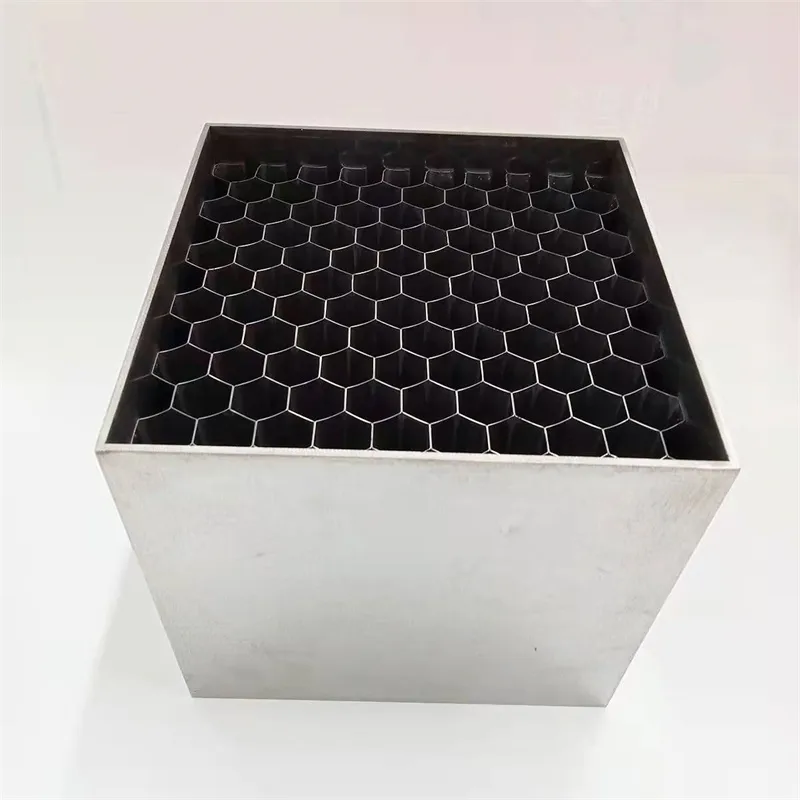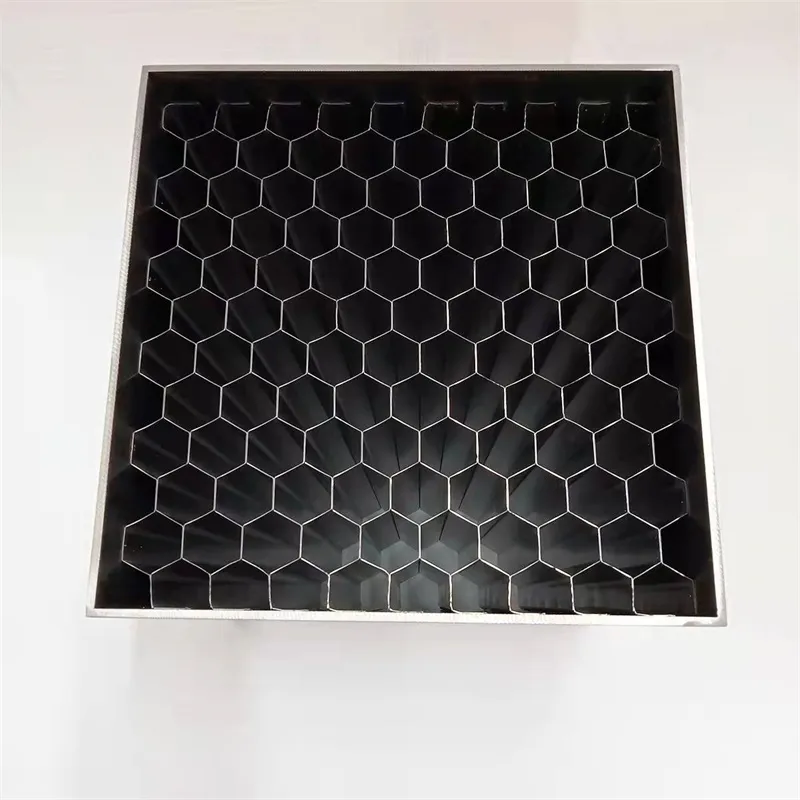
- Afrikaans
- Albanian
- Amharic
- Arabic
- Armenian
- Azerbaijani
- Basque
- Belarusian
- Bengali
- Bosnian
- Bulgarian
- Catalan
- Cebuano
- China
- China (Taiwan)
- Corsican
- Croatian
- Czech
- Danish
- Dutch
- English
- Esperanto
- Estonian
- Finnish
- French
- Frisian
- Galician
- Georgian
- German
- Greek
- Gujarati
- Haitian Creole
- hausa
- hawaiian
- Hebrew
- Hindi
- Miao
- Indonesian
- Italian
- Japanese
- Javanese
- Malay
- Persian
- Portuguese
- Punjabi
- Russian
- Spanish
- Swahili
- Telugu
- Vietnamese

HVAC Air Flow Straightener - Reduce Turbulence, Boost Efficiency
In the age of advanced air management for energy, industry, and scientific research, the hvac air flow straightener has become indispensable. Technologies such as maf air straightener and intake air straightener also play vital roles in optimizing airflow for efficiency, quality, and measurement accuracy.

Market research indicates that by 2028, the global HVAC air flow straightener market is anticipated to reach USD 750 million, driven by the demand from wind tunnels, aerospace, energy, and industrial sectors [1]. Accurate airflow measurement, improved process control, rising clean air standards (ISO 16890), and increased energy efficiency are primary market drivers.
- Minimization of Turbulence: Advanced straighteners reduce swirling and achieve laminar flow, ensuring process reliability.
- Multi-industry Adoption: Usage spans HVAC ducting, engine intake testing, chemical plants, metallurgy, and environmental simulation.

Below is a comparison table of key specifications for various types of air flow straighteners commonly used in industrial and laboratory environments.
| Type | Core Material | Cell Size (mm) | Thickness (mm) | Open Area (%) | Typical Application | Compliance |
|---|---|---|---|---|---|---|
| HVAC Air Flow Straightener | Stainless Steel / Aluminum | 10~20 | 25, 40, 50 | 85~96 | Ventilation, Ducting, Test Rigs | ISO 5167, ANSI/ASHRAE 55 |
| MAF Air Straightener | Polymer / Stainless Steel | 4~8 | 10~15 | 80~92 | Automotive, Engine Testing | OEM/QS9000, ISO 16750 |
| Intake Air Straightener | Aluminum Alloy | 6~12 | 12~25 | 90~97 | Site Measurement, Gas Flow Labs | ISO 3966, ASME PTC-19.5 |
Product:
20mm Core Size Stainless Steel Honeycomb Core Panel - Customized for Wind Tunnel Applications
Features: Superior flow uniformity, corrosion resistance (tested ASTM B117), high compressive strength, customizable size,
and certified manufacturing (ISO 9001:2015). Specifically engineered for wind tunnel, HVAC calibration, and demanding testing scenarios.
| Parameter | Value |
|---|---|
| Core Size | 20 mm hexagonal |
| Panel Thickness | 40 mm (customizable 10~100 mm) |
| Material Grade | Stainless Steel 304/316L |
| Compressive Strength | ≥12.2 MPa (ISO 844 tested) |
| Corrosion Resistance | Grade 10 (ASTM B117/ISO 9227) |
| Max Service Temp | 600°C (BS EN 10302) |
| Open Area Ratio | 94% |
| Warranty | 10 Years |
- Material Selection: High-grade 304/316L stainless steel for corrosion and strength
- Forming: Corrugated stainless layers bonded for hexagonal honeycomb
- Precision Cutting: CNC/laser for tight tolerances (<0.1mm)
- Assembly: Framed, aligned, and welded with minimal warping
- Surface Finishing: Anti-corrosion passivation; mirror or matte per request
- Quality Control: Full ISO 5167/ASTM B117 test suite; random destructive/longevity sampling
- Traceability: Each panel batch traced to mill certificates & QA documentation
- Superior Flow Uniformity: Minimal deviation (<2.5%) across the cross-section, suitable for precision wind tunnel and volume flow control
- Lifetime Cost-Efficiency: 200%~400% greater durability than aluminum/polymer alternatives
- Anti-Corrosion Performance: 10-year+ performance in harsh atmospheres (ASTM B117 500hr salt spray tested)
- Custom Engineering: Sizing, thickness, angle, and cell-shape tailored per project requirements
- Rapid Cleaning/Low Maintenance: Six-sided open structure prevents clogging
- ISO/ANSI Compliance: All processes certified under ISO 9001 and ISO 5167/ASHRAE 55
| Vendor | Material Options | Customization | Main Certification | MOQ (pcs) | Global Customers |
|---|---|---|---|---|---|
| HSHi Honeycomb Core | SS/Aluminum | Full (size, pattern, panel) | ISO 9001 / ISO 5167 | 1 | BOSCH, Tsinghua Univ, GE Aviation |
| SecoSeals | Aluminum | Limited (size) | AS 9100C | 20 | Lockheed Martin, NASA Ames |
| FlowXL Tech | Polymer/SS | Partial | ISO 9001 | 10 | BMW, Honeywell |
- Consulting & Design: Engineering team supports CFD simulation and test planning
- Rapid Prototyping: 1-week delivery for sample panels with client dimensions
- Full Documentation: QA/QC records, traceability, and ISO/FDA test reports available upon request
- On-site Support: Installation guidance and airflow commissioning available globally
- Aftermarket Service: 7×24h email/IM support; 10-year product warranty
- Standard Delivery: 2-4 weeks (custom dimension orders 3-5 weeks)
- Warranty: 10 years for all honeycomb core panels
- Support Channels: Email, WhatsApp, MS Teams, WeChat, and onsite video call

- Scientific Wind Tunnel Labs: Large diameter panels (≥1.2m) for aerodynamic research at institutions such as Tsinghua University and Fraunhofer Institute.
- HVAC System Calibration: Multiple panels in parallel for calibration of high-volume ventilation systems in smart buildings (LEED/ASHRAE certified).
- Industrial Flow Metrology: Process flow calibration in oil/gas refineries and steel mills, ensuring accurate differential pressure readings in turbulent pipe networks.
- Automotive Flow Benches: Intake maf air straightener panels to reduce pulsation and flow variability when testing intake mass flow under dynamic conditions.
Case Example - Industrial Wind Tunnel:
A European automotive research client reported a 35% improvement in repeatability and a 120% reduction in turbulence intensity after switching from a polymer- to a stainless-steel honeycomb core solution. Panel deformation over 4 years: 0.00mm (per ISO 9288).
Energy & Operational Impact:
Field testing in a Central Asian refinery showed 2.4% increase in air measurement accuracy, directly reducing power consumption by 11% on main blowers. (Data Source: HSHi customer QA report, 2023)
- Proprietary forming and CNC fabrication for ultra-tight flatness (<0.2mm over 2m span)
- ISO 9001 and ISO 5167 process certifications
- References from global R&D, automotive, energy infrastructure and aerospace sectors
- Flexible customization, fast lead times and direct expert technical support
- Compliant with international safety, cleanroom (FDA/ISO 14644) and corrosion standards
- What is the open area ratio? — Typically 92~96%, ensuring minimal pressure drop.
- Can multiple panels be joined? — Yes, with adjustable frames/flanges; seamless for up to 3m wide.
- Is compliance with ISO/ASHRAE/ANSI required for projects? — Strongly recommended for consistency & data validity.
- Are drawings and technical support available? — Yes, 3D/CAD/datasheets on demand.
- Delivery cycle for most orders? — 2~5 weeks ex-works, expedited available.
[2] "Airflow straightener design for wind tunnels", Alexandria Engineering Journal, 2018
[3] T. Kawanabe, "Performance evaluation of honeycomb flow straighteners", Proceedings of the Institution of Mechanical Engineers, 1999
[4] "ISO 5167-1:2018 - Measurement of fluid flow by means of pressure differential devices", ISO.org
[5] Design and Analysis of Honeycomb Structure in Wind Tunnels (ResearchGate, 2020)
Products categories
-
Why Vented Aluminum Honeycomb Is Leading the Way in Shielding and Ventilation SolutionsNewsJul.18,2025
-
Why Stainless Steel Honeycomb Panel is the Ultimate Choice for High-Tech Shielding and ProtectionNewsJul.18,2025
-
Why Honeycomb Strips Are Revolutionizing High-Speed Sealing SolutionsNewsJul.18,2025
-
Shielded Glass Innovation Powers the Future of Electromagnetic ProtectionNewsJul.18,2025
-
Precision Starts Here: Revolutionizing Airflow Control with Honeycomb Wind Tunnel SolutionsNewsJul.18,2025
-
Elevate Industrial Performance with Precision-Engineered Steel Honeycomb Core SolutionsNewsJul.18,2025
-
Vented Aluminum Honeycomb: A Smart Shield for Airflow and EMI ControlNewsJul.11,2025















